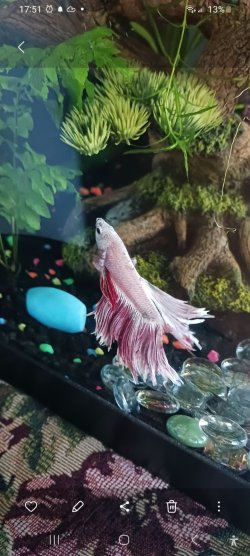Tyler777
Fishaholic
This is from my wife : her betta boy lost his bright color n his dorsal fins look messed up.
He lives in a 20 gallons tank with 3 baby albino corys.
So no other fish attacked him or harrases him.
I did a water change last Saturday morning bout 25% .
He swims around but not as much n he still ears but he looks weird not as playful as he used to.
Also her Betta girls keep dying for some reason 3 died in the last 2 days we have 2 left one is looking like she won't b alive in the morning n the other looks fine. So far.
The gouramies are gone into another tank so it's just the girls n corys.
I'm starting to think that tank is cursed
He lives in a 20 gallons tank with 3 baby albino corys.
So no other fish attacked him or harrases him.
I did a water change last Saturday morning bout 25% .
He swims around but not as much n he still ears but he looks weird not as playful as he used to.
Also her Betta girls keep dying for some reason 3 died in the last 2 days we have 2 left one is looking like she won't b alive in the morning n the other looks fine. So far.
The gouramies are gone into another tank so it's just the girls n corys.
I'm starting to think that tank is cursed




